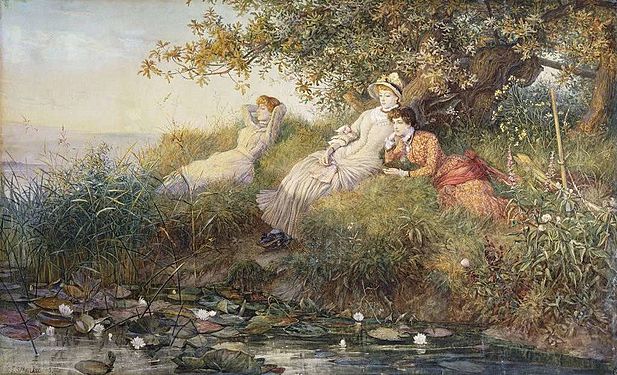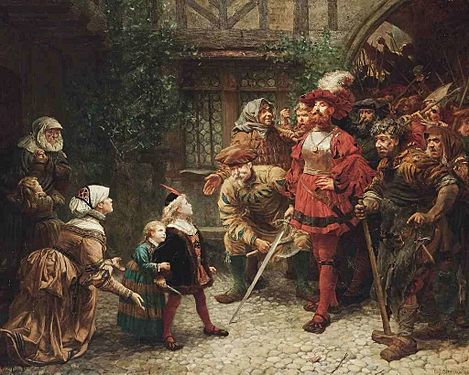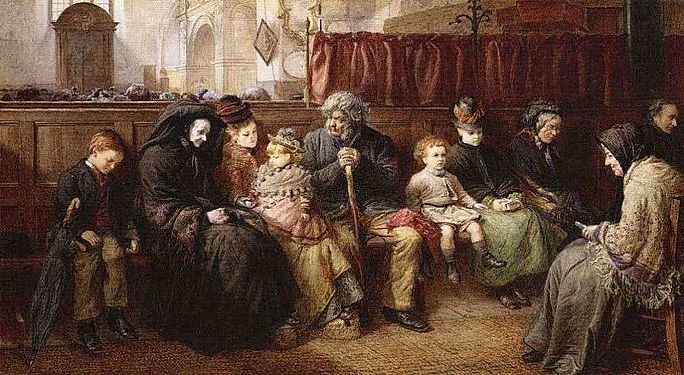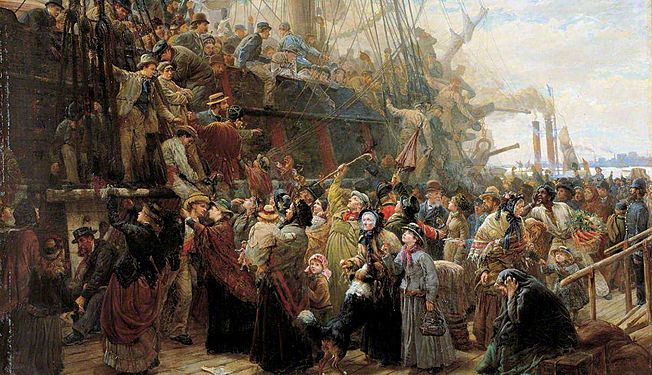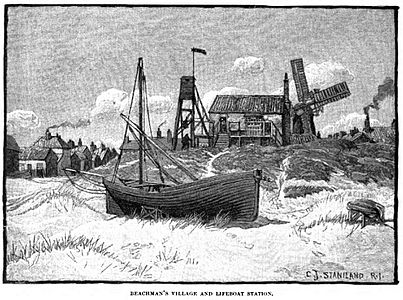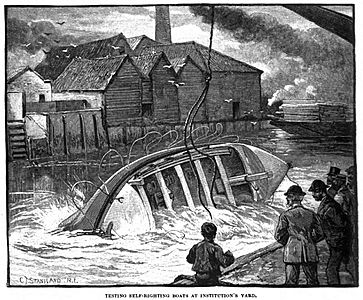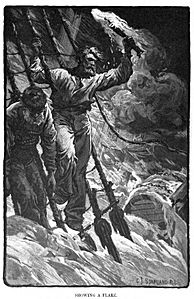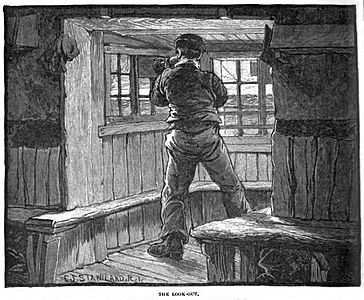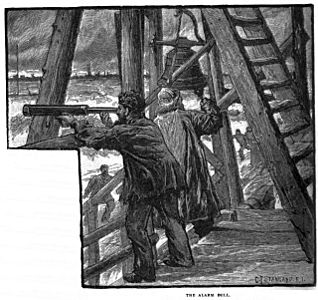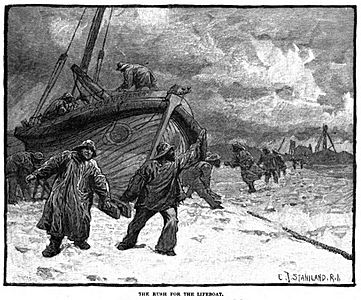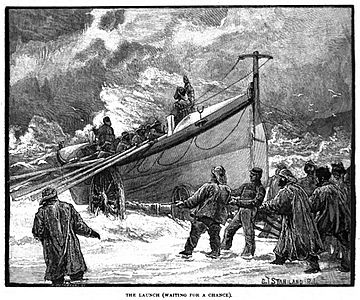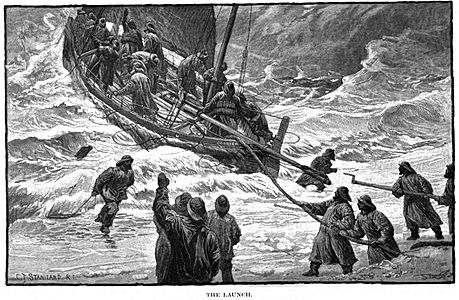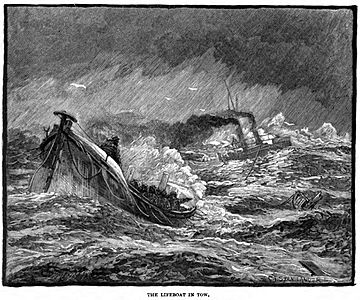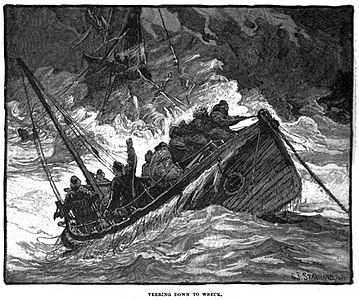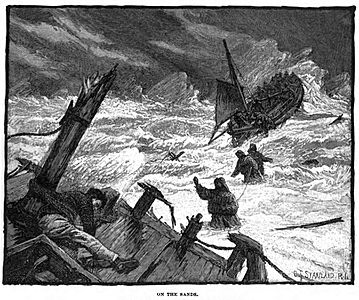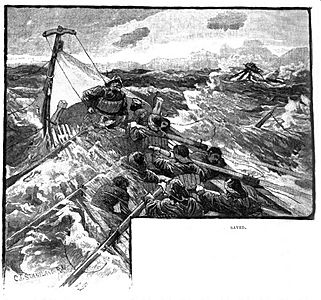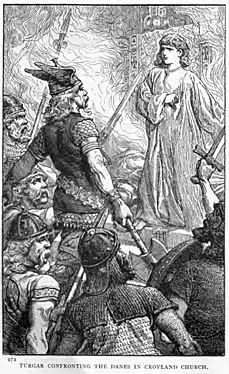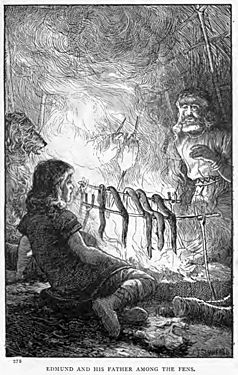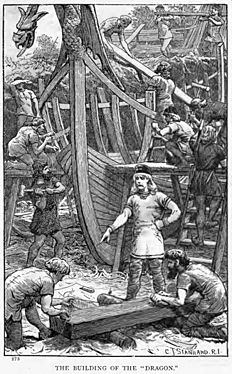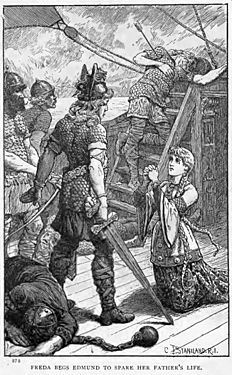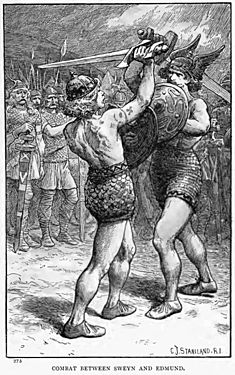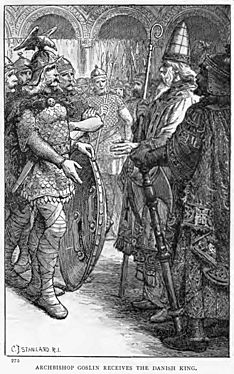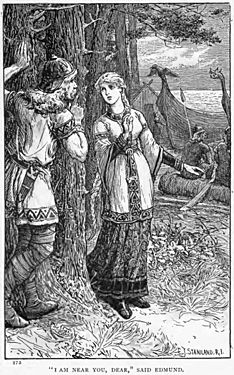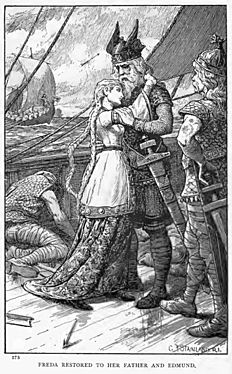Charles Joseph Staniland facts for kids
Quick facts for kids
Charles Joseph Staniland
|
|
|---|---|
| Born | 19 June 1838 |
| Died | 16 June 1916 (aged 77) Birmingham, Warwickshire, England
|
| Nationality | English |
| Occupation | Artist and illustrator |
| Years active | 1861–1906 |
| Known for | Depiction of marine scenes |
|
Notable work
|
The Emigrant Ship |
Charles Joseph Staniland (born June 19, 1838 – died June 16, 1916) was a very active British artist. He was known for painting different kinds of scenes, including historical events and especially pictures of the sea. He was also a top illustrator who focused on showing real-life social situations. Charles Staniland was a key artist for famous newspapers like Illustrated London News and The Graphic in the 1870s and 1880s.
Contents
About His Life
Charles Joseph Staniland was born in Kingston upon Hull, Yorkshire. His father, Joseph Staniland, was a merchant. Charles studied art at several schools, including the Birmingham School of Art, the Heatherley School of Fine Art, and the Normal Training School of Art in South Kensington. He became a student at the Royal Academy in 1861.
In 1868, he married Elizabeth Parsons Buckman. They had five children who all grew up. By 1871, Charles was living with his wife and first child in Chiswick. They were doing well enough to have a nurse and a servant. By 1881, his family had grown, and they lived in Hampstead with all five children, two servants, and a governess.
An artist named Josiah Robert Wells, who was the governess's brother, also lived with them. Charles Staniland and Josiah Wells worked together on several book illustrations. Wells was especially good at drawing marine subjects and ships for The Illustrated London News.
Later in his life, Staniland lived in Chingford, Essex, and then in Fleet, Hampshire. He passed away in Birmingham in 1916.
His Artworks
Charles Staniland was both a painter and an illustrator. He created many artworks for newspapers and magazines.
Paintings
Staniland started showing his paintings at the Royal Academy in 1863 and continued to do so until 1881. He became a member of the RI in 1879, which is a group for artists who use watercolors. He was also a member of the ROI from 1883, for artists who use oil paints.
He painted using both watercolors and oils. One of his famous themes was The Emigrant Ship. He first showed a watercolor called The last Day in Old England in 1875. This painting showed people getting ready to leave their home country. Later, his oil painting The Emigrant Ship (also known as Good-Bye!) showed the busy dockside as a ship was about to leave. People said the painting showed the sad feelings of families saying goodbye. It was praised for showing the excitement and pain of people leaving on a ship.
Magazine and Newspaper Illustrations
Staniland was a main illustrator for newspapers and magazines. He worked for The Illustrated London News and The Graphic. He also contributed to many other magazines, including:
- Atalanta
- Aunt Judy's Magazine
- The Boy's Own Paper
- The British Workman
- Cassell's Family Magazine
- The Children's Friend
- Chums
- The English Illustrated Magazine
- Golden Hours
- Good Words
- Harper's Weekly
- The Illustrated London News
- The Leisure Hour
- London Society
- Longman's Magazine
- The Pall Mall Magazine
- The Quiver
- Short Stories
- The Strand Magazine
- The Wide World Magazine
In 1886, Staniland not only drew pictures but also wrote a two-part story about Lifeboats and Lifeboat-men in Great Britain. This story appeared in The English Illustrated Magazine.
Book Illustrations
Charles Staniland illustrated over 90 books! Some of these were done with his fellow artist, Josiah Wells.
He drew pictures for many famous authors, including:
- Hans Christian Andersen, a Danish author known for his fairy tales.
- Harry Collingwood, who wrote adventure stories for boys, often about ships.
- George Manville Fenn, a writer of exciting stories for young people.
- G. A. Henty, a very active writer of adventure stories for boys, often set in history.
- W. H. G. Kingston, who also wrote adventure stories for boys.
- Frederick Marryat, a Royal Navy officer who wrote adventure books for children.
- Walter Scott, a Scottish writer famous for historical novels like Ivanhoe.
- Edward Whymper, an English explorer and mountaineer who was also an illustrator.
- Charlotte Mary Yonge, who wrote many books to share her religious beliefs.
In 1886, Staniland illustrated The Dragon and The Raven, or The Days Of King Alfred by George Alfred Henty. His drawings for this book were made to look like wood carvings, which was a popular style at the time.
His Impact
Experts say that Charles Staniland was especially good at drawing marine scenes. His pictures showed ships and sailors up close, making you feel like you were right there. His many drawings for The Illustrated London News and The Graphic were very important to those newspapers in the 1870s and 1880s. One writer even said that readers would almost feel the sea spray as they looked at his pictures!
He was also a skilled portrait artist and painted still-life pictures and birds in watercolor. His realistic drawings for The Graphic, especially those about mining, were even admired by the famous painter Van Gogh. Staniland's artworks have sold for good prices at auctions, showing how much his work is valued.


